calsfoundation@cals.org
Quartz Mining
Arkansas is one of a small number of places in the world with enough quartz crystals to justify commercial mining. Though the amount of unmined quartz in the state is not yet known, Arkansas does have, in terms of both size and quality, some world-class deposits of quartz. Quartz is a common mineral that becomes crystallized under extreme geologic pressure. These crystals have been used to make oscillators for radios, computer chips, and clocks. Quartz crystals are also valued for their beauty as mineral specimens and gemstones. In 1967, the General Assembly adopted the quartz crystal as the Arkansas State Mineral.
History of Quartz in Arkansas
A quartz arrowhead that is estimated to be over 11,000 years old was discovered at the Mount Blakely Dam site in Garland County. Before AD 1000, the Plum Bayou people built the Toltec Mounds in the Arkansas River Valley. They made arrowheads, scrapers, and knives out of clear quartz. The quartz was more difficult to work with than other available stones and may have served a ritual purpose. In 1541, Spanish explorers led by Hernando de Soto found that the Indians in the region that is now Arkansas were making arrowheads out of quartz crystal. Archaeologists have yet to discover prehistoric quartz mines, leading many to believe that the quartz used by these Indians was found on the surface. The Hunter-Dunbar journals (circa 1804) make reference to quartz crystals and other minerals from the Little Missouri River valley in what was certainly the Ouachita Mountains.
In 1819, Henry Rowe Schoolcraft, the naturalist and explorer wrote, “One of the most noted localities of this mineral west of the Mississippi River is the Hot Springs of Ouachita in Arkansaw Territory. At this place numerous pieces of quartz have been found, very pure and transparent, and beautifully crystallized….”
Characteristics of Quartz
Quartz is composed of silicon and oxygen and is common throughout the world, although most of it is not crystallized. Crystallization occurs when the silicon dioxide or silica is heated. The source of the heat can be extremely hot water from underground sources, which fills open fissures to create filled quartz veins. In Arkansas, this reaction is estimated to have occurred during the last part of the formation of the Ouachita Mountains, about 280 to 245 million years ago. During the cooling, the silicon and the oxygen recombined as molecules formed by one silicon atom and four oxygen atoms. All of the crystals have six sides or prism faces because of their molecular structure. Quartz is rated seven on the Mohs hardness scale; diamonds are rated ten. Some quartz exists in sand form.
Uses for Quartz
Crystallized quartz has several properties that make it valuable. It is capable of steady vibrations, also called oscillations, that can be used to regulate the flow of electricity. Quartz chips are made of synthetic crystals that are cut into very small wafers using lasers. The chips are found in clocks, watches, computers, stereos, television, radar and sonar. Quartz is also an ingredient in synthetic stone materials that can be used as kitchen counter tops. The crystals can convert electrical voltage into the mechanical regulation of clocks and computers. This process can be reversed by using mechanical pressure to produce electrical voltage.
Many people believe quartz contains metaphysical properties, and followers of the New Age movement look to crystals for their purported healing properties and as an aid to altered levels of consciousness. Hot Springs diamonds are quartz crystals that are cut in the faceted style of diamonds and other precious stones.
Quartz Mining in Arkansas
A “quartz belt” that is between thirty and forty miles wide runs through the core of the Ouachita Mountains into Oklahoma. Garland, Perry, Montgomery, and Saline counties are the other principal locations of quartz deposits in the state, though the crystal is also found in Hot Spring, Pike, Pope, Pulaski, Sevier,and, Yell counties. In Mount Ida (Montgomery County), Ocus Stanley began the modern mining of quartz in 1930. Quartz has been mined in the region since the early 1800s. Stanley believed that in the history of quartz mining in the state, only about four percent of the crystals in the Ouachita Mountains had been removed. He had the longest mining lease in the Ouachita National Forest, opened Mount Ida’s first rock shop, and has been credited with helping launch other quartz dealerships. He has been dubbed the “undisputed grand old man of quartz in Arkansas.”
During World War II there was a demand for Arkansas quartz for radio oscillators for the military. The Blocker Lead No. 4 Quartz Mine, now known as the Old Coleman Mine in Jessieville (Garland County), came under federal control. The Willis Mine in Saline County was also a significant wartime operation. Demand for quartz decreased with the end of the war and with the development of synthetic crystals derived from white quartz.
In the 1960s, as the electronics industry expanded, a Japanese company acquired a lease for the Blocker Lead No. 4 Quartz Mine from the Weyerhaeuser Company. They were interested in using white crystals as an ingredient in the process of growing synthetic crystals. The mine was later acquired by West German and then Canadian interests. Since 1987, Ron Coleman has owned Blocker Lead No. 4. The Coleman Family has been digging there since the 1930s. Mike Howard estimated that there are between twenty and twenty-five mines currently operating for specimens and tourist collectors.
Most of the quartz is extracted from open pit mines. Sometimes explosives are used to expose pockets of quartz. A crystal that has been underground can be damaged if removing it causes a sudden change in temperature. In the Ouachitas, there are various mines open to the public for a fee. The Ouachita National Forest is also open to miners who have permission from the Forest Service to mine commercially using hand tools, as well as “rockhounds” who pick up small amounts of quartz from the surface of the land for personal use. Approximately 5,000 people visit this federal quartz resource in a year. Permission must be granted from the Forest Service to dig. Noncrystalized quartz in the form of sand is currently mined underground by the Unimin Corporation at Guion (Izard County).
For additional information:
Cox, Dorothy. “Crystal Fever’s Catching.” Arkansas Gazette, October 1, 1987, p. B1.
Gettinger, Aaron. “Rock Shops Draw Wide Clientele.” Arkansas Democrat-Gazette, October 7, 2023, pp. 1D, 4D. Online at https://www.arkansasonline.com/news/2023/oct/07/rock-shops-draw-wide-clientele/ (accessed October 10, 2023).
Howard, Darcy, and Mike Howard. Collecting Crystals: The Guide to Quartz in Arkansas. Little Rock: A&I Studio Press, 2000.
———. Rockhounding Arkansas. http://www.rockhoundingar.com (accessed November 19, 2020).
Leveritt, Mara. “Good Vibrations.” Arkansas Times, April 1986, p. 45.
Lotz, Kelly. “Mining in Family’s Veins.” Arkansas Democrat-Gazette, July 22, 2001, p. B1.
Martin, Richard. ”Boom and Bust.” Arkansas Times, February 1992, pp. 54–61, 66.
Montgomery County Historical Society. Montgomery County: Our Heritage. 2 vols. Mount Ida, AR: Montgomery County Historical Society, 1987, 1990.
Peacock, Leslie Newell. “Quartz Crystal Clear.” Arkansas Times, January 2020, pp. 26–34. Online at https://arktimes.com/news/2019/12/23/arkansass-buried-treasure-quartz-crystal-rocking-the-art-world (accessed November 19, 2020).
Smith, Arthur E., Jr. Collecting Arkansas Minerals: A Reference and Guide. Little Rock: Ream Publications, 1996.
Thompson, Paula J. “From Doorstops to Microprocessors.” Arkansas Democrat Magazine, May 31, 1987, p. 16.
Allen McMillan
Little Rock, Arkansas
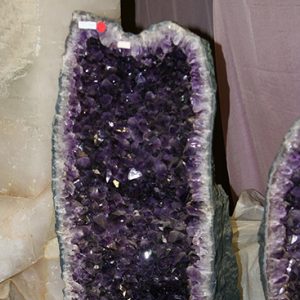 Amethyst Geode
Amethyst Geode 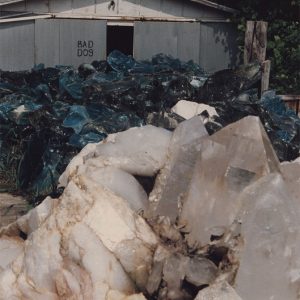 Coleman Quartz
Coleman Quartz 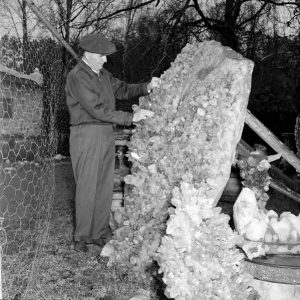 Quartz Crystal Formation
Quartz Crystal Formation 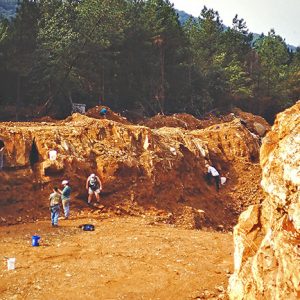 Quartz Crystal Mining
Quartz Crystal Mining 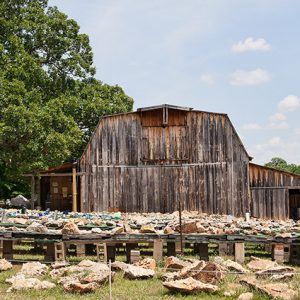 Wegner Crystal Ranch
Wegner Crystal Ranch 



Comments
No comments on this entry yet.